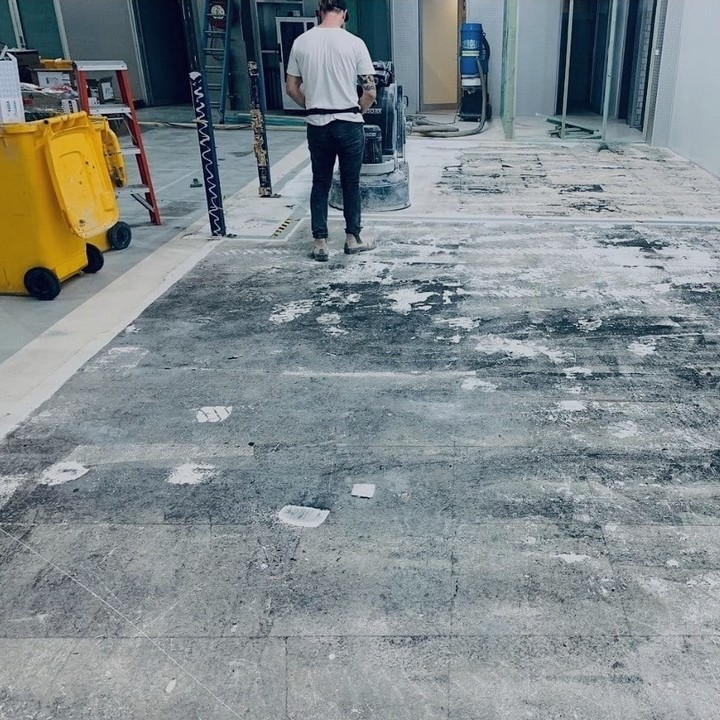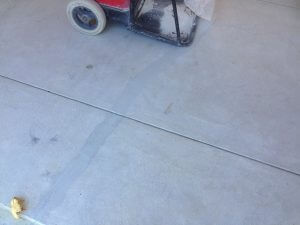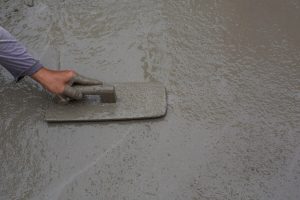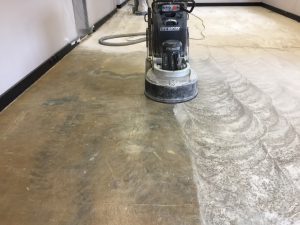The concrete grinding and polishing Sydney market has expanded really quickly. Although concrete grinding and sealing and other concrete processing procedures have been used for over a decade, architects, engineers, property owners, interior designers, and general contractors have only recently begun to pay more attention. Concrete grinding and polishing Sydney contractors will be rewarded as market demands increase if they participate now and take the effort to comprehend the details and nuances of the process.
There are difficulties that polished concrete contractors Sydney must overcome, just as in any other young or developing industry. Some new contractors who are entering the processing industry believe that concrete grinding and polishing Sydney is as simple as flinging abrasives on and off a machine’s bottom. The procedure is actually extremely sophisticated, and when combined with various factors outside of a contractor’s control, performance could potentially suffer greatly if a contractor has the expertise and knowledge to get around these challenges. A contractor must also learn to manage a variety of factors that are under their control.
Another issue is when contractors set their prices based on what other concrete processors are charging rather than on costs plus profit. Additionally, I observe that contractors have no formal technical training, and customers have a profound misunderstanding of what concrete grinding and polishing Sydney entails. Contractors must seek out the right training, educate themselves as much as possible about concrete processing, and educate their clients about what appropriate processing comprises, how long it takes, and how much a proper work should cost in order to see the business develop in the right way.
CONCRETE PROCESSING
It’s common practice to misuse the phrase “concrete grinding and polishing” . The term “concrete processing” is most frequently used to describe this operation, which is not all that different from other firms that treat materials including stone, metal, and optical lenses.
Concrete processing refers to the mechanical alteration of an existing concrete surface, which may involve cutting and/or polishing the surface to the desired finish. Polished concrete is one of many effects of the mechanical refining of the concrete surface using various abrasives that are measured in grits. Currently, the concrete grinding and polishing Sydney industry separates the concrete polishing process into grinding and polishing, however others simply refer to the entire procedure as polishing. Three categories follow one another in the concrete polishing procedure:
- Grinding
- Honing
- Polishing
Then, each category is divided into several phases, each of which uses progressively finer grit abrasives. A densifier or hardener is applied during this process and is absorbed into the concrete, where it causes a chemical reaction that increases the concrete’s density and hardness. Concrete that has been prepared but not entirely polished concrete. For instance, the category of steps for grinding and honing skips the polishing category of steps and produces an appearance with a matte to a low, medium, or high sheen.
THE CATEGORIES AND STEPS OF CONCRETE GRINDING AND POLISHING SYDNEY
The lowest level of processing for a concrete surface is ground concrete. Any grit abrasive from roughly a 50-grit resin and below is regarded as a grinding step (if the abrasive medium is classified in terms of grit). A concrete surface that has been ground has a flat appearance, no reflection, or very little reflection, and occasionally has a low sheen.
The following category of above ground concrete in the processing system is honed concrete. A honing step is defined as any grit abrasive between about a 100-grit resin and a 400-grit resin. A concrete surface that has been honed will seem matte and/or have a low, medium, or high gloss.
The highest level of processed concrete stages is polished concrete. A polishing step is any grit abrasive that is above an 800-grit resin and generally up to 1,500 or 3,000 grit. A polished concrete surface has a glass-like finish and a mirror-like clarity of reflection.
THE CONCRETE GRINDING AND POLISHING SYDNEY PROCESS
Clarity, sheen, shine, depth, homogeneity, and color of reflection all differ from one another Even if the desired outcome is not a profound clarity of reflection, an appropriate grit sequence must be employed to allow for complete refining of the concrete surface with each grit abrasive before advancing to the next progressively finer grit abrasive. This will ensure that the concrete surface has the greatest “clarity of reflection” and “durability” possible. Each grit must be used and honed to the fullest extent possible in order to get a clean, crisp look for the concrete surface at a 200-, 400-, and 800-grit resin.
Beyond simply replacing the scratch pattern left by the previous grit abrasive with the following successively finer grit abrasive, the concrete surface has been fully refined. More concrete polishing can be accomplished once the scratch pattern from the old grit has been replaced. The best results won’t be achieved, the floor won’t be able to have its optimum durability, and the surface will prematurely deteriorate if thorough refinement is not carried out from one increasingly finer grit to the next.
Start with two or three segments of metal abrasive in the 50 or 70 grit range. After that, increase the grit to 100 or 120 with six segments each abrasive. The concrete surface can be closed up and refined as quickly as possible to achieve the best clarity of reflection and durability by switching from a two or three segment to a six segment abrasive. The concrete surface will close more quickly the more surface area an abrasive has. There are circumstances in which using higher metal bond abrasives may be necessary, as well as circumstances in which they are not. Remind yourself to drop back one grit as you transition to the resin abrasives at this point. 30/50, 100/120, 200/220, 400, 800, 1,500/1,800, and 3,000/3,500 would be a normal progression.
All of the resin-bonded diamonds have complete faces, which instantly seal the concrete’s surface for the best durability and purity of reflection. You can stop at any grit, depending on the outcomes you want.
Get a quote for our concrete grinding and sealing services by filling out the form below:




